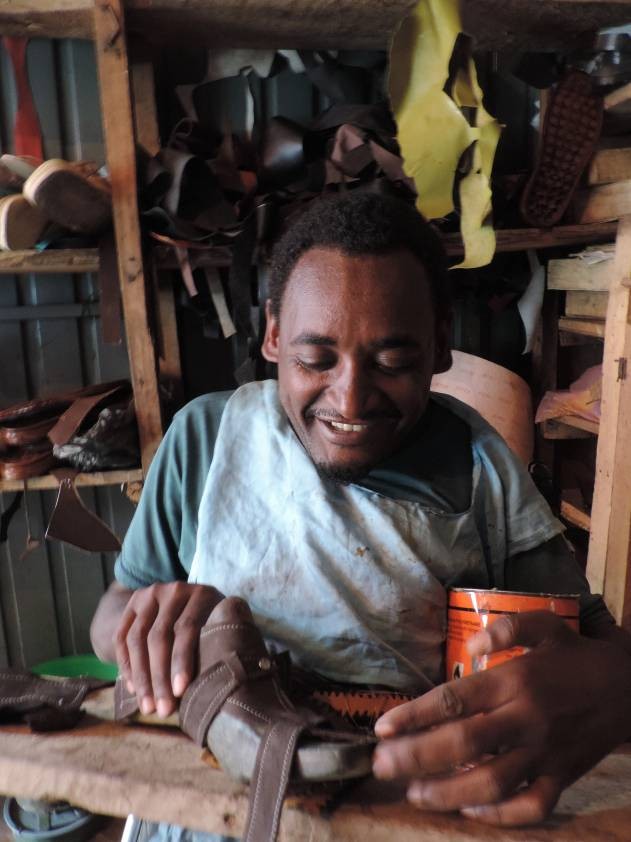
August 2015—Living with a disability often means facing discrimination, exclusion from mainstream society, and a formidable range of physical obstacles. For most of the more than 7 million Ethiopians living with disabilities, simply getting around usually requires assistance from family or friends, while earning a real income and having financial independence remain unattainable dreams.
Melesse Yohannes, 25, was one of the millions facing extreme challenges because of his disability. “Two years ago, I was sleeping on the streets and had to pull myself along the dirty roads because I didn’t have mobility. I supported myself by begging,” said Melesse.
Then his life dramatically changed when he received a wheelchair, vocational training in leather craft, and some startup capital through USAID's Improved Wheelchair Access Through Empowering Local Initiatives project.
Today, the former street-side shoeshine boy owns and manages a shoemaking and repair shop. When he needs supplies, he can now simply go out and buy them. Running his own business allows Melesse to save 50 Ethiopian birr (approximately $2.50) per week, and he can now assist others by buying school uniforms and textbooks for children in his neighborhood.
Senait Melesse had learned how to make leather goods and was renting a room to use as a shoe repair shop, but her rent was too high to make a profit. She got her first wheelchair through the USAID project and received a work space for her shoe repair business from the city of Hawassa. With the shop and the mobility her wheelchair provides, 28-year-old Senait is now able to earn enough to pay her rent and put a little bit into savings every week.
And, while others dread the rainy season, Senait sees opportunity. “Men and women will be bringing their shoes for repairs when they wear out during the heavy rains,” she said.
USAID partnered with International Orthodox Christian Charities, the Ethiopia Center for Disability Development, and Cheshire Services Ethiopia to make these successes possible. The project provided Rough Rider wheelchairs capable of navigating Ethiopia’s often rugged terrain. Hospitals or communities helped to identify those most in need of assistance who could not acquire wheelchairs on their own. The project also helped people with disabilities to support themselves—training 750 people with disabilities in small business development since the project began in early 2012.
Following the training, 16 income-generating groups comprised of 25 members each were established and received startup support. Members are now successfully running their own businesses, some even entering the wheelchair repair business. Increased mobility, decreased dependence on others, and better business skills are just a few of the contributions this project has made for the disabled community in Ethiopia.
Melesse now attends eighth grade and understands that people with disabilities in Ethiopia can become doctors, lawyers, businessmen and teachers. “It is possible!” he exclaims.
The goal of the USAID project, which recently ended, was to address the wheelchair needs of Ethiopians with physical disabilities, and to support income-generating activities of wheelchair users. Through the project, 2,900 Ethiopians now have stories to share about how receiving a wheelchair and training enabled them to live more productive lives with dignity. And they have shown to others what they are capable of when equipped with the right tools.
LINKS
Follow @USAIDEthiopia, on Flickr, on YouTube, and on Facebook







Comment
Make a general inquiry or suggest an improvement.